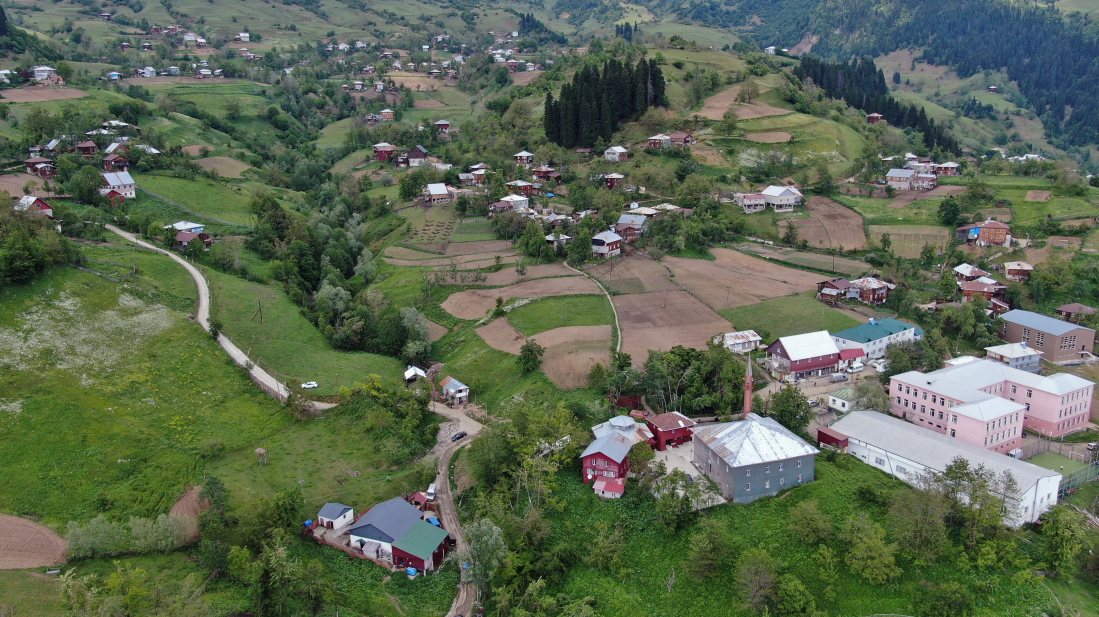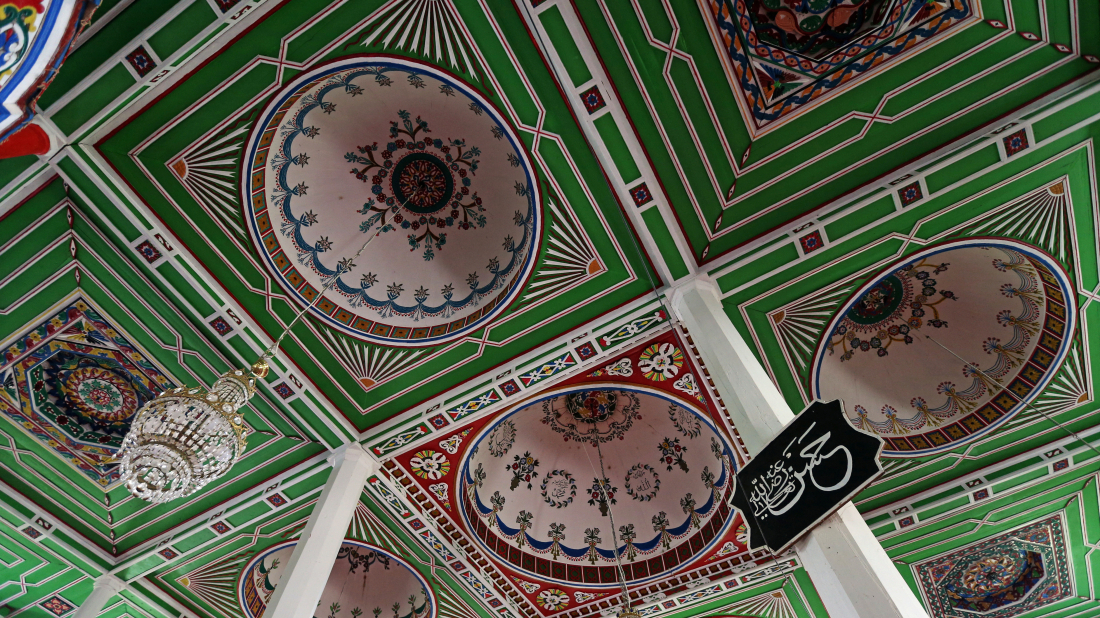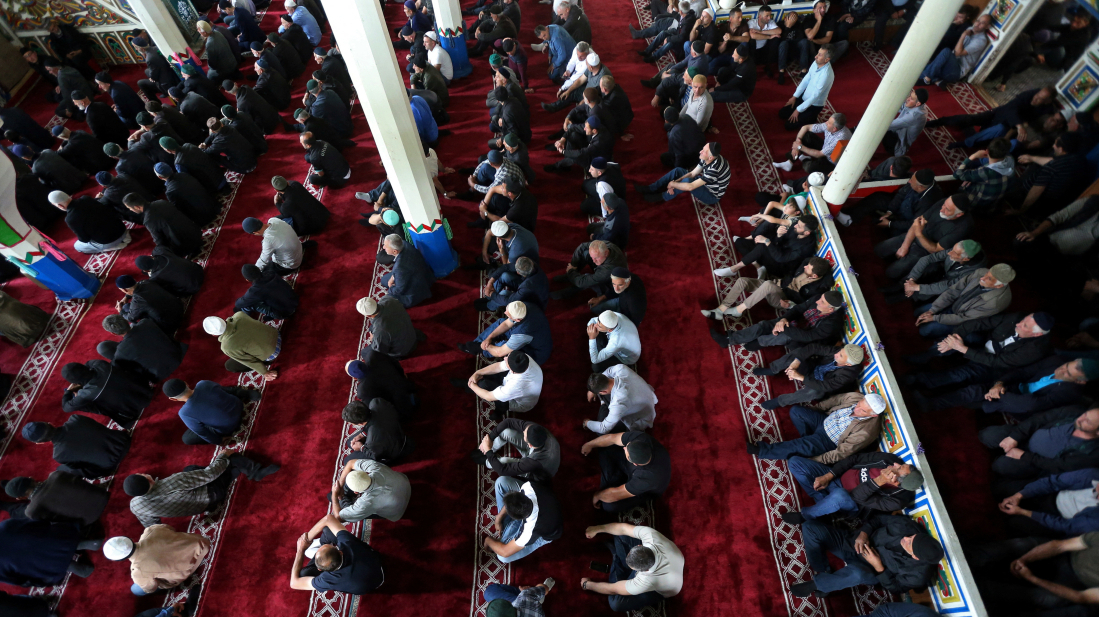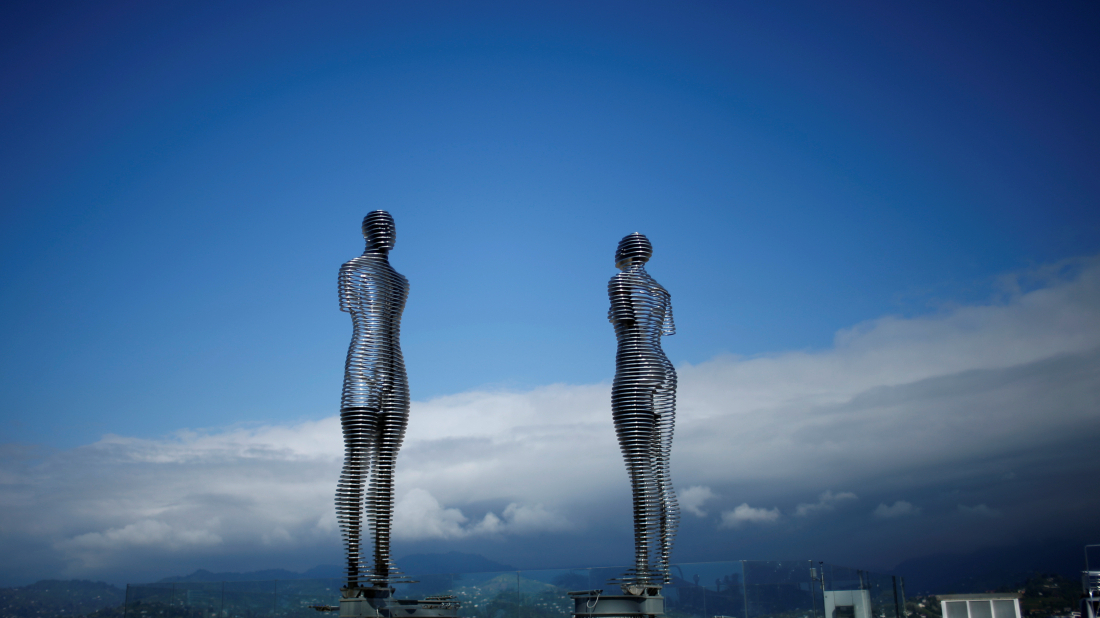Russian airstrike destroys residential area in Kharkiv, Ukraine
Russian airstrikes have devasted apartment buildings in a residential area of Kharkiv, north-eastern Ukraine, injuring at least 25 people according to...

In the remote highland village of Ghorjomi, nestled in Georgia’s Upper Adjara region, Friday prayers at the local mosque are always full.
For the ethnic Georgian Muslims who live here, their faith is as much a part of their identity as their patriotism.
“We are proud to be Georgians. We have a shared past,” says Tariel Nakaidze, a Ghorjomi native and head of the Georgian Muslims Union.
Converted to Islam centuries ago under Ottoman rule, the Muslims of Adjara have long considered themselves loyal citizens of Georgia. Despite this, many still face social pressures in a country where national identity is deeply tied to Orthodox Christianity.
Georgia was the second country in the world to adopt Christianity as a state religion, around 319 AD, and its national flag bears five Christian crosses.
Membership in the Orthodox Church is often seen as a prerequisite for being “truly Georgian.”
Some still derisively refer to Adjara’s Muslims as “Tatars,” a reference to a Muslim ethnic group in Russia.
Nakaidze compares this prejudice to Soviet times. "During the Soviet Union in Georgia, both Christians and Muslims had to live a double life. On the outside, you were an atheist. But at home, you were a believer."
"Unfortunately, after the collapse of the Soviet Union, that problem was replaced by the Orthodox Christian religion."
Yet, Adjaran Islam retains a distinctly Georgian flavour. Locals abstain from the pork and wine enjoyed by their Christian neighbours, but their faith is reflected in the region’s unique wooden mosques, decorated with intricate Ottoman-inspired carvings and traditional Georgian patterns.

On the Black Sea coast, 100 kilometres away, Adjara’s capital, Batumi, hosts one of the region’s most vibrant Muslim communities.
Worshippers overflow onto the streets outside its overcrowded mosques, swelled by tourists from Turkey and the Middle East.

Imam Tamaz Geladze praises Georgia’s tradition of coexistence. “We have lived together for centuries, in friendship and dialogue. Georgia’s diversity is a treasure.”
The imam has been trying to expand his rudimentary, lean-to mosque for years. Although the authorities have granted permission, the project remains tied up in bureaucratic red tape.
While ethnic Georgian Muslims remain a minority, most of Georgia’s roughly 10% Muslim population comes from a different background entirely - the predominantly Shi’ite Azerbaijani minority.
Concentrated in other parts of the country, Azerbaijani Muslims form the backbone of Georgia’s Muslim population.
Their presence highlights Georgia’s broader multicultural fabric, where Islam remains a centuries-old part of the country’s story.
Georgia, besides its religious ties, also shares deep cultural bonds with its Muslim-majority neighbour, Azerbaijan.
One of the most powerful symbols of this connection is the famous “Ali and Nino” kinetic sculpture in Batumi. Created in 2010 by Georgian artist Tamara Kvesitadze, the eight-metre-high steel figures stand on the Black Sea Boulevard, slowly gliding toward each other every ten minutes, merging for a brief moment before drifting apart again.

The statue is inspired by the 1937 novel Ali and Nino, written by Azerbaijani author Kurban Said. The book, translated into more than 32 languages, tells the love story of Ali Shervanshir, a Muslim Azerbaijani boy, and Nino Kipiani, a Christian Georgian girl, set in early 20th-century Baku—a city then known as a melting pot of cultures.
The tale, a metaphor for the meeting of East and West, Islam and Christianity, was adapted into a film by Oscar-winning director Asif Kapadia, premiering at the 2016 Sundance Film Festival and becoming the most successful Azerbaijani film of the past three decades.
Filmed across Azerbaijan, including the historic streets of Baku’s Icherisheher (Old City), the movie reinforced the story’s status as a symbol of love, tolerance, and multiculturalism.

Dozens of people are feared dead and around 100 others injured after an explosion tore through a crowded bar during New Year’s Eve celebrations at the Swiss ski resort of Crans-Montana, authorities said.
At least 47 people were killed and 112 injured after a fire broke out at a crowded bar in the Swiss ski resort town of Crans-Montana during New Year’s Eve celebrations, Italian Foreign Minister Antonio Tajani told Italian media on Thursday.
India has approved a major arms deal with Israel valued at approximately $8.7 billion, highlighting the deepening defence partnership between the two countries.
Russian athletes will not be allowed to represent their country at the Milano Cortina Winter Olympics even if a peace deal is reached with Ukraine, International Olympic Committee President Kirsty Coventry said in an interview with an Italian newspaper.
India and Pakistan on Thursday exchanged lists of nuclear facilities as well as civilian prisoners, under long-standing bilateral agreements, according to official statements from both countries.
Flights have resumed at the Edinburgh airport following a period of cancellations due to an IT issue with its air traffic control provider.
China’s Ministry of Culture and Tourism has issued a formal advisory urging Chinese tourists to refrain from travelling to Japan in the near future, citing growing safety risks and recent political tensions.
Brussels airport, Belgium's busiest, reopened on Wednesday morning after drone sightings during the previous night had resulted in it being temporarily closed, although some flights remained disrupted, its website said.
A Japanese travel agency announced plans to offer point-to-point space travel by the 2030s, promising trips between Tokyo and U.S. cities like New York in just 60 minutes.
China's national railway recorded 23.13 million trips on the first day of the country's eight-day National Day holiday on Wednesday, up nearly 8% from a year earlier and setting a single-day record, state media CCTV reported.
You can download the AnewZ application from Play Store and the App Store.

What is your opinion on this topic?
Leave the first comment